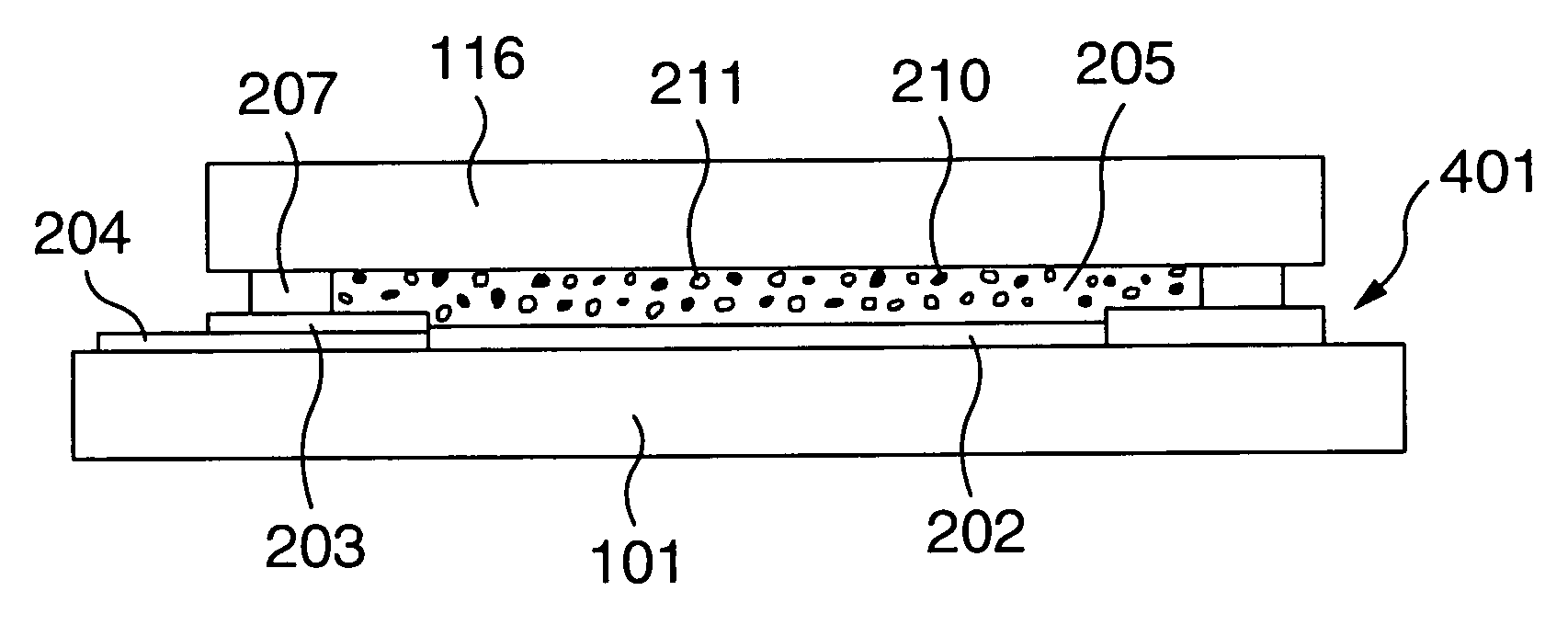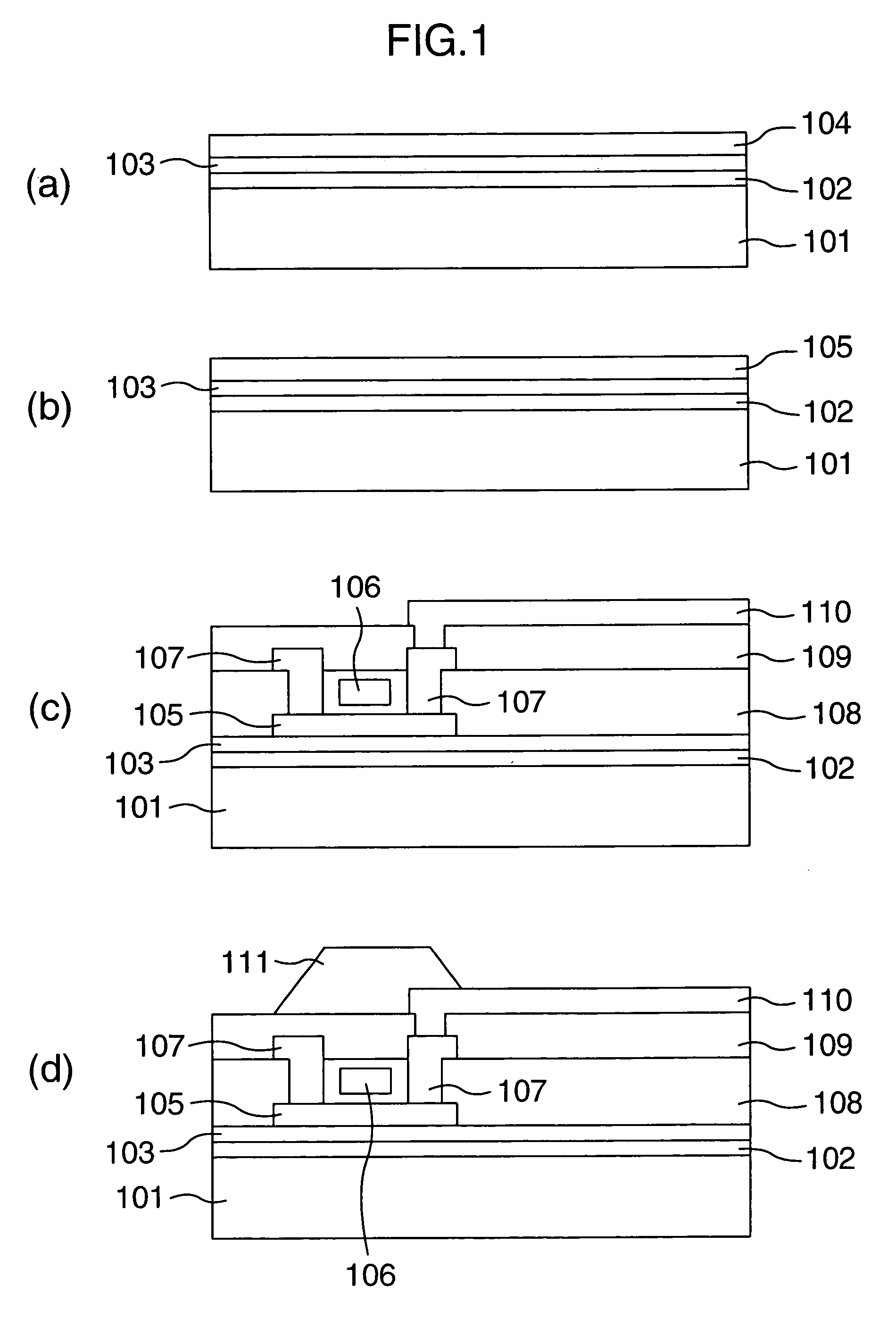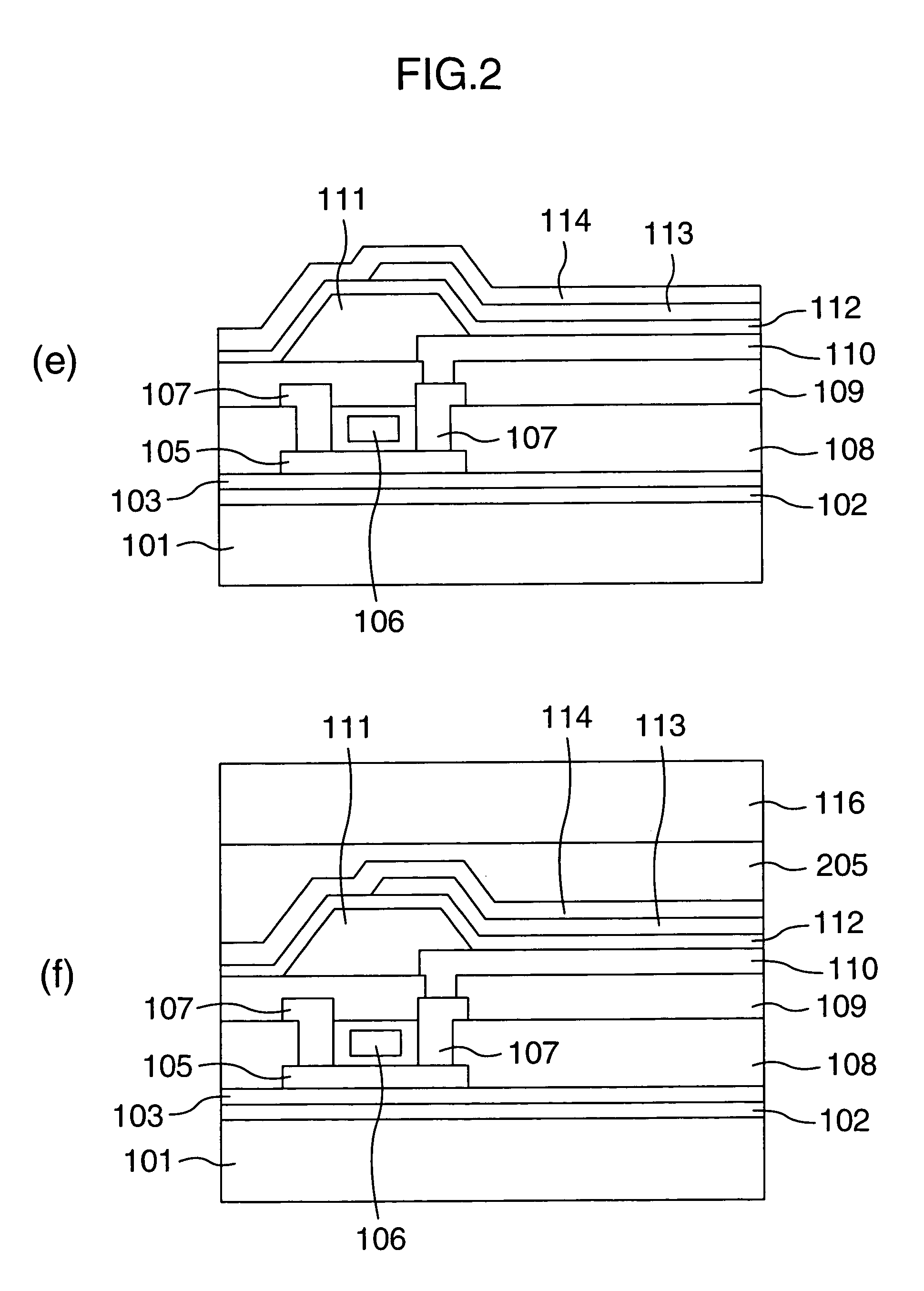Organic electroluminescence display device
- Summary
- Abstract
- Description
- Claims
- Application Information
AI Technical Summary
Benefits of technology
Problems solved by technology
Method used
Image
Examples
example 1
[0064]The material having the following composition is used as one example of the filler for the embodiment of the present invention:
Filler 1
[0065]
ComponentsCompositionEpoxy resin100 parts by weight Amine type curing agent30 parts by weightCu particles40 parts by weightCaO particles 5 parts by weightCoupling agent0.1 parts by weight
[0066]The epoxy resin may be a bisphenol A type resin commercially available, which is liquid at room temperature. A bisphenol A type epoxy resin is suitable because it makes the filler spreadable on a surface, and also preferable for preparation of a printing ink, as described later. The amine curing agent may be selected from various aliphatic or aromatic amine adducts. Curing agents of anhydrous acids or thiol-based one can be used by the related industries. The Cu particles are incorporated to impart thermoconductivity and electroconductivity to the filler. The fine metallic Cu particles having a size of around 1 μm can be used. The CaO particles are...
example 2
[0072]A method adopted in this embodiment for applying the filler to encapsulating the OLED is described by referring to FIGS. 4 and 5. The filler 205 having the composition shown in EXAMPLE 1 is spread by screening printing on the pixel area 202 and insulator 203 on the OLED substrate 401 on which the transistor active matrix is formed by polysilicon on the glass substrate 101. The filler can be spread to a thickness which is controlled at 20 to 50 μm by use of a 300-mesh screen printing plate. The glass substrate for the encapsulating plate 116 is put on the filler, on completion of the printing work, to prevent bubbles from being drug onto the filler, and the filler is cured under heating at 120° C. for 30 minutes. All of the printing, placing the glass substrate and curing works are preferably carried out in a glove box completely free of mixture. It is recommended that moisture is removed to decrease dew point of −60° C. or lower in the glove box.
[0073]This embodiment can reali...
example 3
[0074]Another method adopted in this embodiment for applying the filler to encapsulating the OLED is described by referring to FIG. 6. The filler 205 having the composition shown in EXAMPLE 1 is spread by screening printing on the pixel area 202 and insulator 203 on the OLED substrate 401 on which the transistor active matrix is formed by polysilicon on the glass substrate 101. The filler can be spread to a thickness which is controlled at 20 to 50 μm by use of a 300-mesh screen printing plate. On completion of the printing work, the seal 207 is spread by a dispenser or the like to a width of 2 mm on the insulator 203 in such a way to cover the periphery of the filler 205. An UV curing type may be used for the seal 207. Then, the glass substrate for the encapsulating plate 116 is put on the filler 205 and seal 207, on completion of the printing work, to prevent bubbles from being drug onto them, the seal 207 portion is selectively irradiated with UV to be cured, and the filler is cu...
PUM
| Property | Measurement | Unit |
|---|---|---|
| Percent by mass | aaaaa | aaaaa |
| Length | aaaaa | aaaaa |
| Particle size | aaaaa | aaaaa |
Abstract
Description
Claims
Application Information
 Login to View More
Login to View More - R&D
- Intellectual Property
- Life Sciences
- Materials
- Tech Scout
- Unparalleled Data Quality
- Higher Quality Content
- 60% Fewer Hallucinations
Browse by: Latest US Patents, China's latest patents, Technical Efficacy Thesaurus, Application Domain, Technology Topic, Popular Technical Reports.
© 2025 PatSnap. All rights reserved.Legal|Privacy policy|Modern Slavery Act Transparency Statement|Sitemap|About US| Contact US: help@patsnap.com



